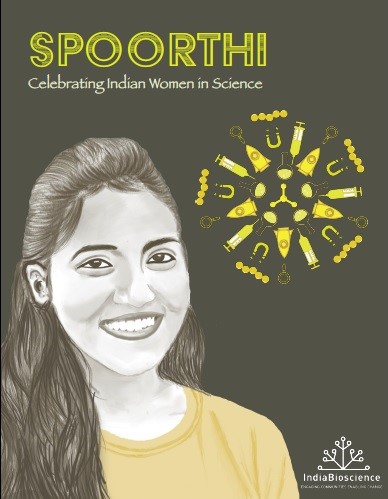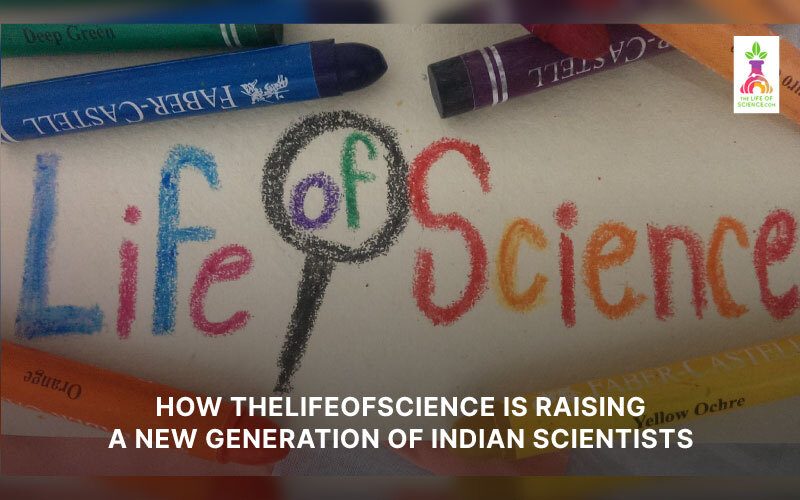Do tell us a little bit about the journey of TheLifeofScience.com
The Life of Science started in 2016 as a blog, a pet project following two freelance science writers Aashima Freidog and Nandita Jayaraj . They journaled biographies of women scientists they met while hopping into laboratories and research institutions in India. The project has since gathered many more voices.
The passion project, borne out of the desire to see and hear femme stories from Indian science in the media, has evolved into a team of freelancers and media makers. It includes science communicators, scientists, graduate students, journalists, artists, and multimedia content creators.
Currently, the team consists of four core members and two other experts who join in from time to time. The four core editors are Aashima Dogra, Aishwarya Viswamitra, Nandita Jayaraj, and Sayantan Datta. Aashima, Nandita, and Sayantan are responsible for the editorial while Aishwarya is holding the fort for our social media and the smooth functioning of the website. The team also has Ipsa Jain, a science artist, and Mrinal Shah, a science educator, as experts. The team consists completely of women and transgender persons.
 Tell us about the latest season – what’s on the plan?
Tell us about the latest season – what’s on the plan?
Season 6 of TheLifeofScience.com (TLoS) is envisioned to be an exclusive multimedia series. It is primarily themed on public health, in the light of the COVID-19 pandemic and its impacts on people from the margins. In addition to public health, we will also have a mini-series of profiles of hidden figures in Indian STEM, which will be curated and developed from our ongoing Twitter project #365IndianWomenInSTEM, as well as pieces on science higher education in India.
#365IndianWomenInSTEM Rubinur Khatun is an astrophysicist at NCRA @TIFRScience investigating dual Active Galactic Nuclei which can be formed by galaxy mergers. She uses data from the Very Large Array observatory as well as the ultra-violet imaging telescope on ASTROSAT. pic.twitter.com/C0DcM0PrWD
— TheLifeofScience.com (@labhopping) August 5, 2021
All the stories in Season 6 will be developed by partnering with a nationwide team of editors, journalists, science communicators, scientists, academics and artists from various marginalized groups. We will also be consulting with experts in the field of public health, science education, and more. These experts will either appear as sources in the reportage or be featured in the resulting reports.
The reports will lie at the intersection of science, social justice, art and journalism. It ensures accessibility to critical news and topics important to the research community to the general public.
For Season 6, we have drafted a plan that includes podcasts, comics, investigative reports, photo essays, biographies, videos, and webinars.
The reports that we create are firstly, completely original borne out of in-depth personal interviews and investigations. The challenge of representation is highly important to the team. More often than not we will go out of our way to platform unheard voices in Indian science.
Our stories are set in the reality of the wide gender gap in our institutes and the patriarchal outlooks of policies and current leadership一our reports are not shy to call these out. TLoS content is edited from a feminist critique of science as it is practiced and discussed in India.
We are curious to know about the numerous publications on your website! Do tell us a little about them.
Since the project started, there have been many offshoots of the project. 31 Fantastic Adventures in Science, a children’s book published by Penguin India is one of them. The project has also contributed to various inclusivity and women in science initiatives taking place around the country.
Spoorthi – a booklet by India Bioscience celebrating Indian women in science was put together with the help of a list of vetted women scientists from TLoS. We have various such resources on TLoS to assist journalists, students, and talk organizers in continuing the scientific discourse in an inclusive manner. The project has had wide-reaching impacts and has been featured on various media reports. The team is also invited to deliver talks at science institutes, universities, and cultural institutions.

So far, how has your work empowered or brought awareness to women and marginalized communities?
Our attempt at TLoS is to answer questions like: How is Indian science progressing? What are the challenges minorities in Indian science face? Who are the researchers in India who come from diverse marginalized identities? What kind of work are they doing? What are their stories? Our content has been cross-posted and sometimes syndicated to several media partners including TheWire.in, firstpost.com and The Hindu. TLoS is also a content partner for LabXChange.org一a free science education digital platform from the Harvard Faculty of Arts and Sciences.
Our work has highlighted an unprecedented number of women, transgender and non-binary people in science as seen in our LabHopping reports, #365IndianWomeninSTEM and Annual Indian Women, Transgender and Non-Binary Persons in Science initiatives. Additionally, we have also produced pioneering reports on the state of queer-trans people in Indian science, caste and casteism in Indian academia, and issues of discrimination and scientific misconduct in Indian science institutions.
Moreover, we have recently collaborated with Ronak Borana, a science journalist, to produce a list of experts from marginalized backgrounds. Journalists can use this list to increase the diversity of their sources while reporting.
According to you, what is lacking in our society when it comes to bringing up scientists? Or encouraging a conversation based on science?
Firstly, science is seen as an objective discipline that is not marred by the nuances of human subjectivity. While the scientific method does strive for a pure notion of objectivity, remember that science doesn’t exist in a vacuum. It is performed by scientists who bring their own social and personal biases to the table. It is, therefore, important to inculcate the feeling that science is a human endeavor prone to human errors.
Secondly, it is important to highlight how science practice is discriminatory against people from the margins. Women, queer-trans people, Dalit-Bahujan-Adivasi people, neurodivergent people, disabled people一they are all discriminated against in Indian science practice on a systemic and systematic level. It is important to recognize these inequalities that exist in Indian science and work towards a systemic change.
How did you discover Instamojo?
At TheLifeofScience.com, we strive to compensate each of our season contributors fairly. Considering the different kinds of article formats we publish from comics to investigative journal pieces, it really does take a village!
Because of Twitter, it has been easier than ever to connect with our readers. Our Twitter following grew this year because of a thread we began called “ #365IndianWomenInSTEM”. Through this, fellow journalists, scientists, academics, and a whole platform of students have begun to read and support our content.
In order to gather funds for this year’s season, we decided to approach our Indian supporters and one way we thought worked for everyone was through Instamojo. We had already used Instamojo to sell our 2021 calendar “Indian Women, Transgender & Non-binary Persons in Science,” so we were familiar with its user-friendly interface. We put up different amounts as products on our Instamojo page and with a simple click of a button, our fundraising process has been streamlined and simplified.
It takes a village to make a season! To ensure that we can compensate everyone fairly, we need you to join as a crowdfunder
https://t.co/x135vcMAz8
Continue reading this thread for info on the membership levels available.
PS: Look out for the perks!— TheLifeofScience.com (@labhopping) July 12, 2021

